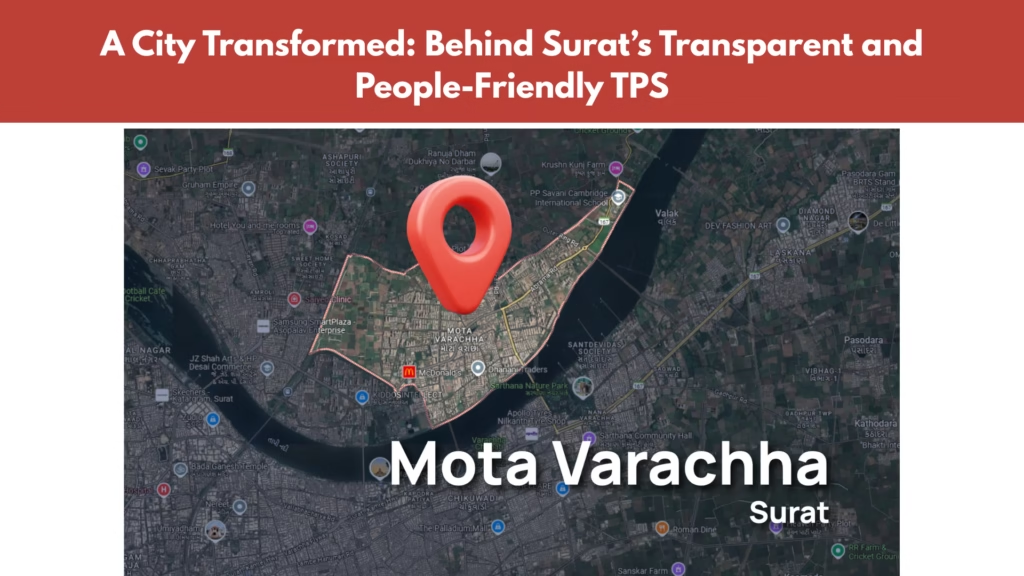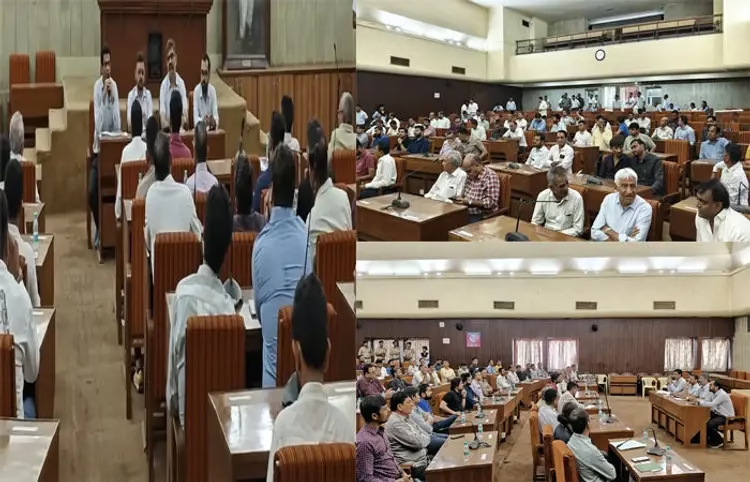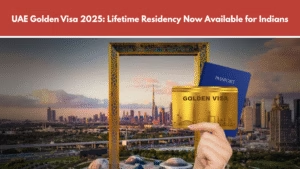Town Planning Scheme Surat city – India’s Most Transparent Urban Development Model

Surat city
Surat city, one of India’s fastest-growing cities and a global diamond and textile hub, is gaining national attention -not just for its economic prowess but also for a revolutionary urban initiative known as the Town Planning Scheme Surat (TPS). Often regarded as India’s most transparent and citizen-friendly town planning model, TPS Surat has transformed how urban development, land acquisition, and public infrastructure expansion are executed.
This blog dives deep into the evolution, framework, execution, and transparency mechanisms of Surat’s Town Planning Scheme, making it a model for other Indian cities.
1. ✅ What is a Town Planning Scheme?
A Town Planning Scheme (TPS) is an urban land management method where the government pools private land from owners, develops infrastructure like roads, water supply, and open spaces, and returns a portion of the developed land to the original owners. It’s a win-win strategy—citizens get developed land, and cities get organized infrastructure.
2. 🏛️ History of Town Planning in Surat
Surat city has been using TPS as a land development model since the early 1990s. However, it gained serious momentum in the 2000s with the formation of Surat Urban Development Authority (SUDA) and the Surat Municipal Corporation (SMC). These two bodies together steered the TPS movement.
The transformation was triggered post the 2006 flood disaster. Surat’s administration decided to redesign its approach to urban planning with more citizen participation and transparency.
3. 🎯 Vision Behind TPS Surat city
The core objectives of the TPS model in Surat are:
- Develop infrastructure before the population explosion.
- Ensure equitable land distribution.
- Promote transparent dealings with landowners.
- Encourage green space and public utility planning.
- Drive economic growth through better city layout.
The vision was not just better roads or parks—it was a livable, future-ready Surat city .

4. 🧱 How TPS Works – The Land Pooling Concept
TPS Surat city operates on land pooling, not acquisition. This means:
- The government does not forcefully acquire land.
- It pools land from multiple owners in a defined area.
- Develops roads, drainage, street lighting, and gardens.
- Returns up to 50-70% of land to owners post-development.
- The returned land has higher market value due to new infrastructure.
For example, a person contributing 1000 sq. m. may receive 600–700 sq. m. of land back—but with better connectivity and increased value.
5. 🧾 Step-by-Step TPS Process in Surat city
- Preliminary Notification by SMC/SUDA
- Appointment of Town Planning Officer
- Surveys & GIS Mapping of the Area
- Consultation with Landowners
- Draft TPS Publication
- Objection Hearing & Suggestions
- Final TPS Approval
- Infrastructure Development
- Land Redistribution with New Plots
This phased approach ensures clarity, documentation, and fairness at every level.
6. 🔍 Features That Make TPS Surat city Transparent
- Digital Access to maps and records.
- Real-time updates to landowners through SMS and portal.
- Public hearings for all major decisions.
- No forceful eviction or land acquisition.
- Online grievance system.
- GIS-based Mapping accessible to all stakeholders.
7. 🌐 Use of Technology and GIS Mapping
Surat’s TPS system is digitally driven.
- GIS (Geographic Information System) is used for layout, road width, plot shape, and encroachment data.
- Citizens can view the entire TPS plan online via portals like SUDA’s TPS system.
- Drones and satellite images are used to measure land boundaries accurately.
Technology has played a huge role in ensuring zero manipulation and maximum transparency.
8. 🧑🤝🧑 Community Participation and Grievance Redressal
One of the unique aspects of TPS Surat city is citizen engagement:
- Open jan sunvai (public hearings) for draft plans.
- Special outreach for low-income and slum communities.
- Dedicated TPS help centers across zones.
- Online portals for objection filing.
- Public representatives and NGOs are involved in monitoring.
This approach gives trust and ownership to the people.
9. 🏆 TPS Success Stories in Surat city
Here are a few TPS areas in Surat city that have transformed:
- TPS 67 (Pal-Hazira Zone): Now a modern residential-commercial hub.
- TPS 30 (Rander): Seamless road connectivity, flyovers, and gardens.
- TPS 47 (Vesu): Luxury apartments, shopping malls, and green belts.
These were once rural or poorly planned outskirts, now fully integrated with the city.
10. 🚧 Key Projects Completed Under TPS
- 150+ kms of arterial roads constructed
- Green spaces like Lake Gardens, Mini Forest Parks
- Underground sewerage and stormwater drains
- LED Streetlights, Wi-Fi zones, cycling tracks
- Affordable housing schemes integrated within TPS
All these were possible without litigation or mass displacement.
11. 💰 Economic Impact on Landowners and City
For landowners:
- The land’s market value increases 3x to 10x post-TPS.
- They receive developed plots with access roads.
- Many have started small businesses or real estate projects.
For Surat city:
- Better urban density control.
- Boost in property tax collection.
- Job creation in construction and services.
- Massive foreign investment due to improved city infrastructure.
12. 🥇 Awards and Recognition
TPS Surat city has received:
- HUDCO Best Practice Award
- World Bank Urban Innovation Mention
- Smart Cities India Award 2023
- UN Habitat Urban Planning Honorary Mention
It’s often showcased in national conferences and urban planning training modules.

13. 🔄 TPS Surat vs Other Cities
| Feature | Surat TPS | Other Indian Cities |
|---|---|---|
| Land Pooling | 100% Voluntary | Often mixed |
| Transparency | Public GIS Maps | Limited public access |
| Citizen Engagement | High | Moderate |
| Litigation | Rare | Frequent |
| Execution Time | 3-4 years | 6–10 years |
Surat’s model is being studied by cities like Ahmedabad, Pune, and Nagpur.
14. 🛠️ Challenges and How Surat city Overcame Them
- Challenge: Initial resistance from landowners
Solution: Public outreach and stakeholder education - Challenge: Encroachments
Solution: Pre-mapping using drones and community negotiation - Challenge: Legal complexity
Solution: In-house legal cell and fast-track hearings - Challenge: Political opposition
Solution: Bipartisan support due to transparency
15. 🚀 Future of Urban Planning in Surat
The city plans to:
- Launch TPS for industrial zones.
- Integrate EV infrastructure and smart parking.
- Create urban forests and lakes.
- Use AI to predict urban growth patterns.
- Enable blockchain-based land registry for even more security.
TPS Surat is seen as a living model of future-ready, transparent, and citizen-driven city planning.
📝 Conclusion
The Town Planning Scheme Surat is more than just an urban development tool—it’s a revolution in how cities can grow without conflict, corruption, or chaos. With citizen trust, modern technology, and administrative willpower, Surat has demonstrated that even in a densely populated, fast-growing city, development can be planned, participatory, and transparent.
As India urbanizes rapidly, Surat’s TPS may well become the gold standard for other municipalities. If you’re looking for a case study in urban governance done right, look no further than Town Planning Scheme Surat.




